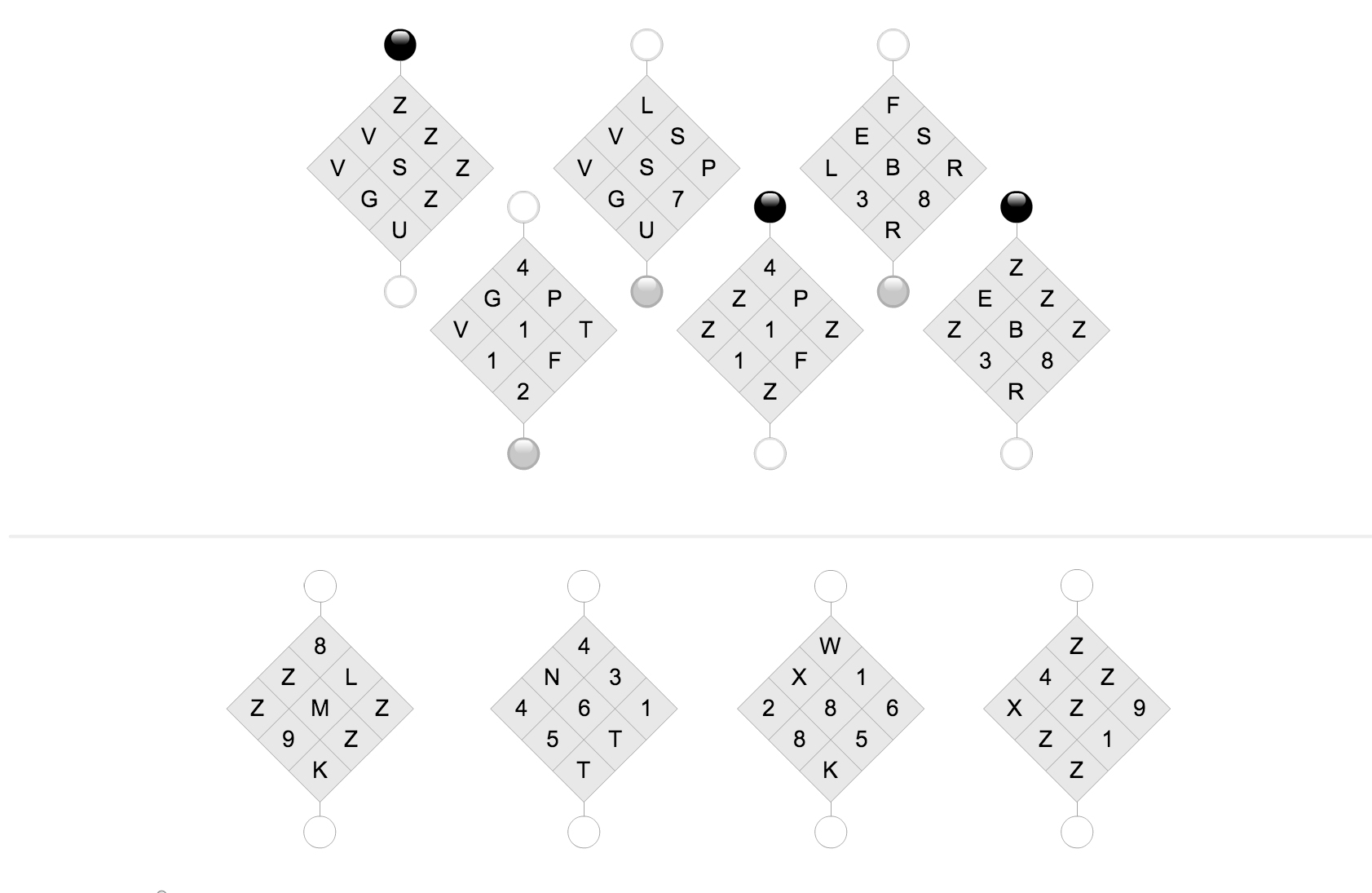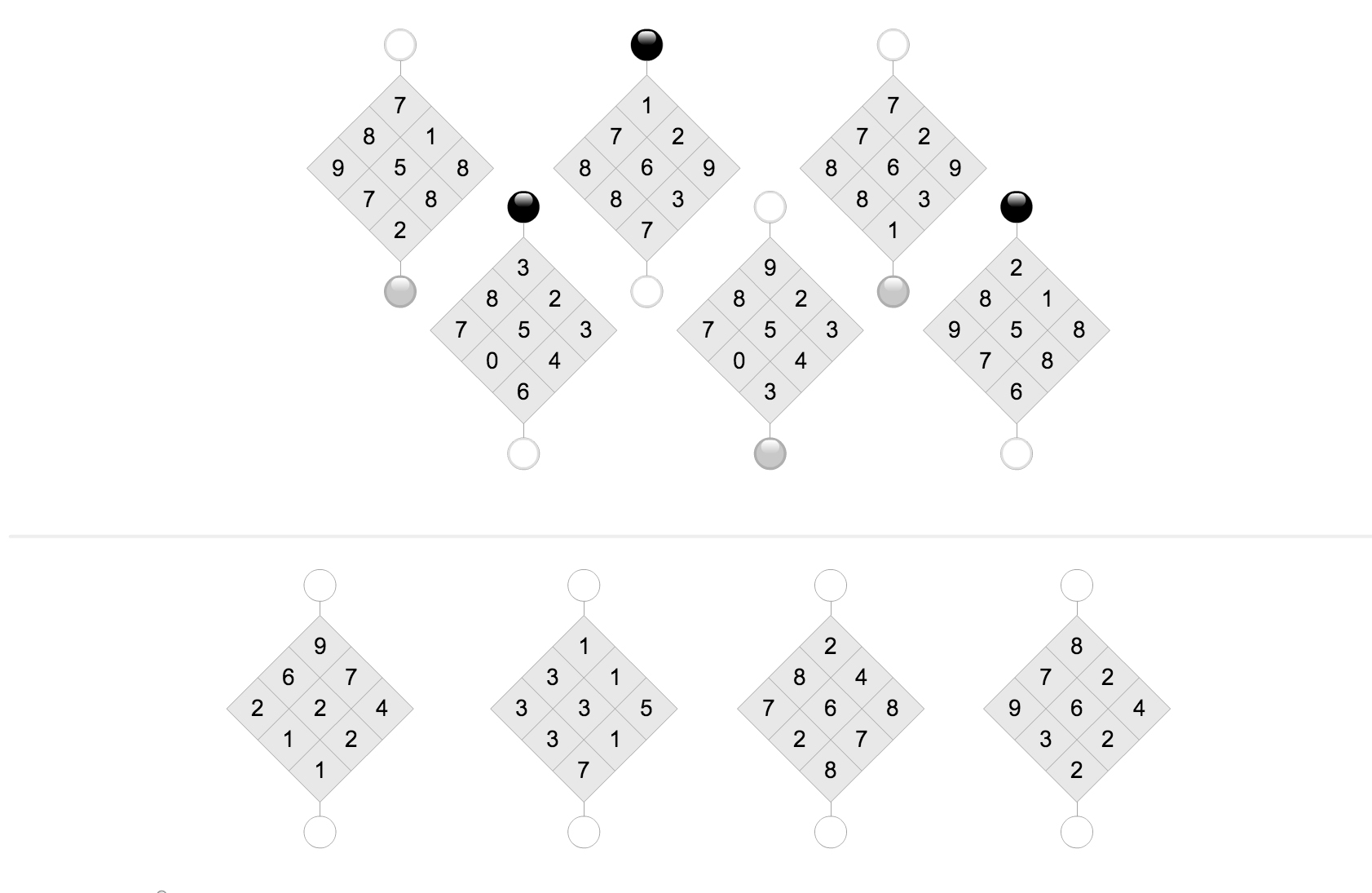The ambiguity is not your fault, it's just the basic nature of all categorizing puzzles that provide way more object information (9 symbols per object) than categorizing information (5 bits total). There are only 32 ways to divide the grids into categories, but because there is so much information in the objects, there are many more simple ways to describe a division into categories.
So it's likely that there are several possible criteria that yield the given division, and unless the puzzle has gone to great lengths to make one of these criteria by far the most simple/obvious/natural, or to ensure that all the most natural criteria yield the same solution, the solution to these puzzles will be ambiguous.
Here, you'll have to decide for yourself which criterion is the most natural, and hope that the puzzle creator feels the same way.
Here are my guesses:
Task 1:
The criterion is "lots of Zs". Grids 1 and 4 get a black dot.
Task 2:
The criterion is "four equal corners". Grids 2 and 4 get a grey dot.
Task 3:
The criterion is "top digit is less than bottom digit". Grids 2 and 3 get a black dot.
Task 4:
The criterion is "the sum of digits is greater than 10". Grids 1 and 2 get a black dot. Note that if the sum is greater than 10, then always by a significant amount.
Task 5:
The criterion is "top three digits have greater sum than bottom three digits." Grids 3 and 4 get a black dot.
Note that "top digit is greater/less than bottom digit" would fit too, but that would make two of the answer grids unclassifiable. This is one of the instances where you need to think about what the author might have intended: the separating line of letters suggests that the author wants to split the digits into groups.





